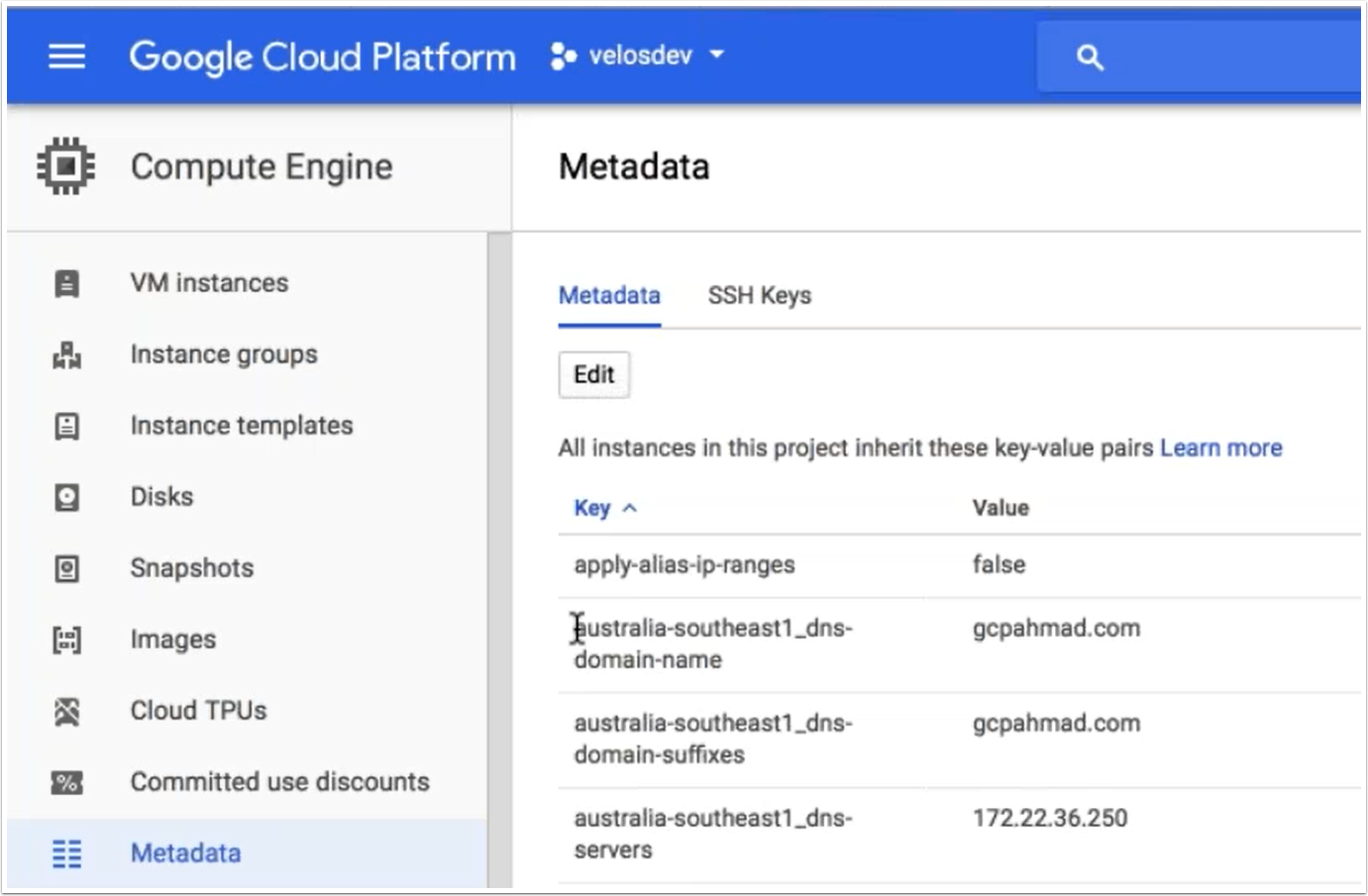Overview
Google Cloud VPC networks have an internal DNS service and do not automatically support configuring external DNS for a VM. Enterprises, however, might prefer to manage their own DNS servers directly and need to configure external DNS on migrated VMs.
Migrate for Compute Engine provides a way to set and control the external DNS settings of migrated VMs. To do this, configure DNS settings in the Google Cloud project using Google Cloud project metadata. These settings are applied to new VMs as they are migrated.
As an alternative, Google Cloud offers a standalone DNS forwarding solution as part of Cloud DNS. Cloud DNS works with all resources in a Virtual Private Cloud and provides DNS resolution of names both on-premises and on Google Cloud.
How DNS settings are applied
The DNS settings are applied as follows:
- For Windows clients, the key-value pairs are applied to all NICs as
follows:
dns-domain-name: Replaces theDNS suffix for this connectionsetting per NIC.dns-servers: Replaces the list of DNS servers per NIC.dns-domain-suffixes: Replaces the list of DNS suffixes per NIC.
- For Linux clients, the key-value pairs are applied to all NICs as
follows:
dns-servers: Prepends the list of DNS servers in theresolv.conffile.dns-domain-suffixes: Prepends the list of DNS suffixes in theresolv.conffile.
Configuring your VMs to connect to the metadata server
Google Cloud provides metadata to VMs hosted on Compute Engine. To use external DNS without forwarding to Cloud DNS, you need to configure name resolution for your VMs manually.
To do so, add the following line to the /etc/hosts file (on Linux)
or c:\Windows\System32\Drivers\etc\hosts (on Windows).
169.254.169.254 metadata.google.internal
Configuring external DNS data on VMs in GCP
To enable external DNS on migrated VMs:
- In the Google Cloud console, go to the Metadata page for your project.
- Under Metadata, click Edit.

Enabling external DNS (click to enlarge) - In the Metadata page, add the appropriate key:value pairs. Use
one of the following sections for instructions for these deployments:
- If your VMs have a region setting, follow the instructions in Using VMs with a region setting.
- If your VMs don't have a region setting, follow the instructions in Using VMs without a region setting to use the default configuration.
Using VMs without a region setting (default)
If your VMs don't have a specific region setting, add the following key-value pairs in the Metadata page:
Key Example Value {region_name}_dns-domain-name: mydomain.com{region_name}_dns-servers: {comma separated list of IPs}{region_name}_dns-domain-suffixesmydomain.com, myseconddomain.comWhen you're done, click Save.
Using VMs with a region setting
If your VMs have a specific region setting, add the following key-value pairs in the Metadata page:
Description Key Example Value Windows clients {region_name}_dns-domain-name: mydomain.comList of DNS servers {region_name}_dns-servers: {comma separated list of IPs}represents the list of DNS suffixes to add to Windows and Linux machines. {region_name}_dns-domain-suffixesmydomain.com, myseconddomain.comWhen you're done, click Save.
